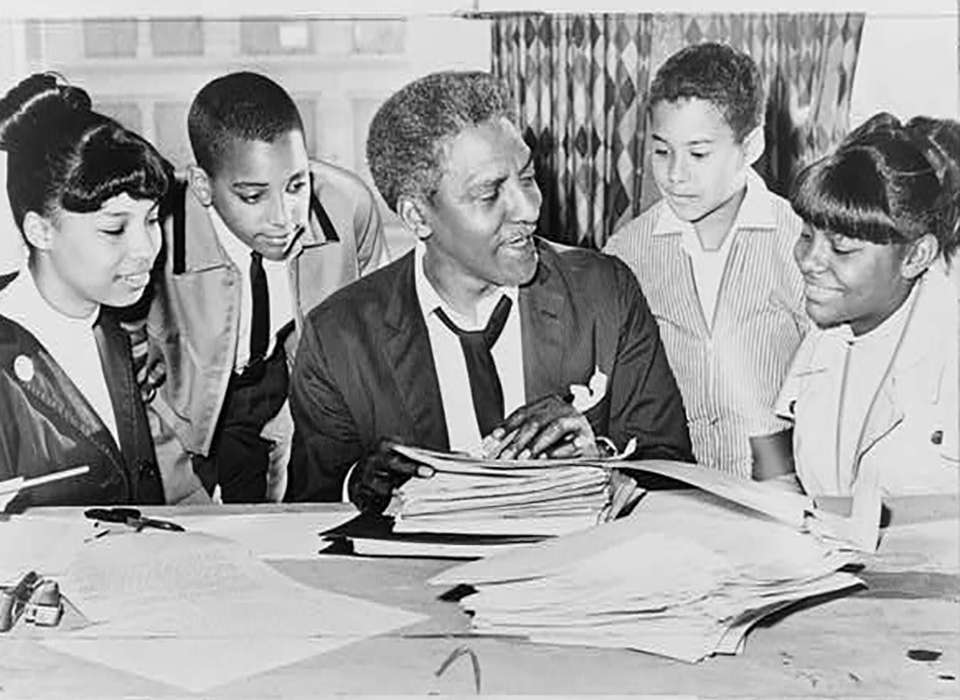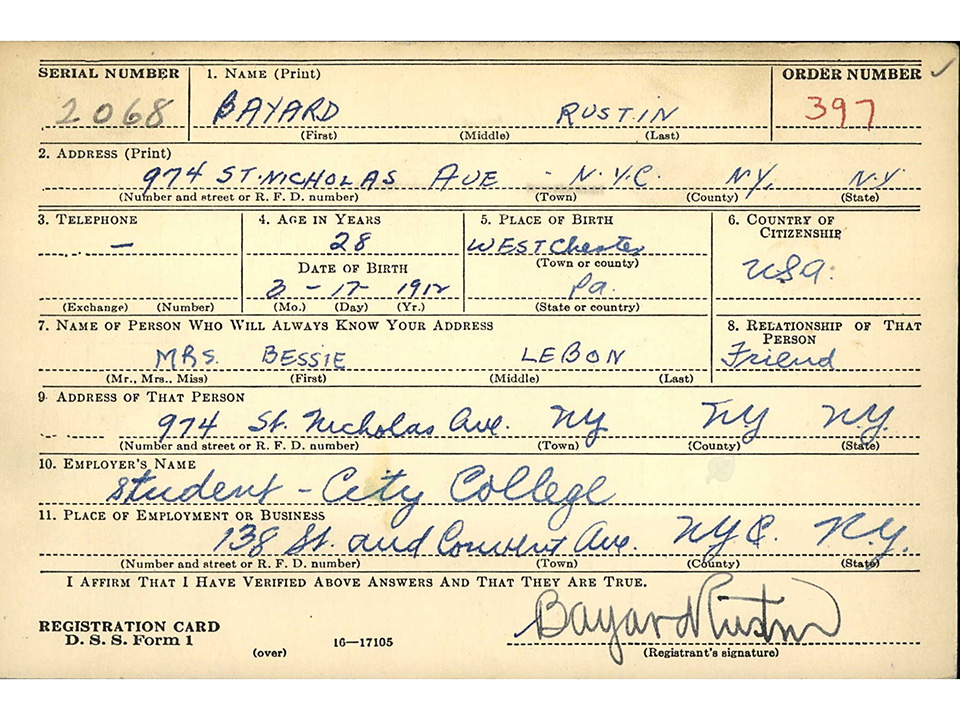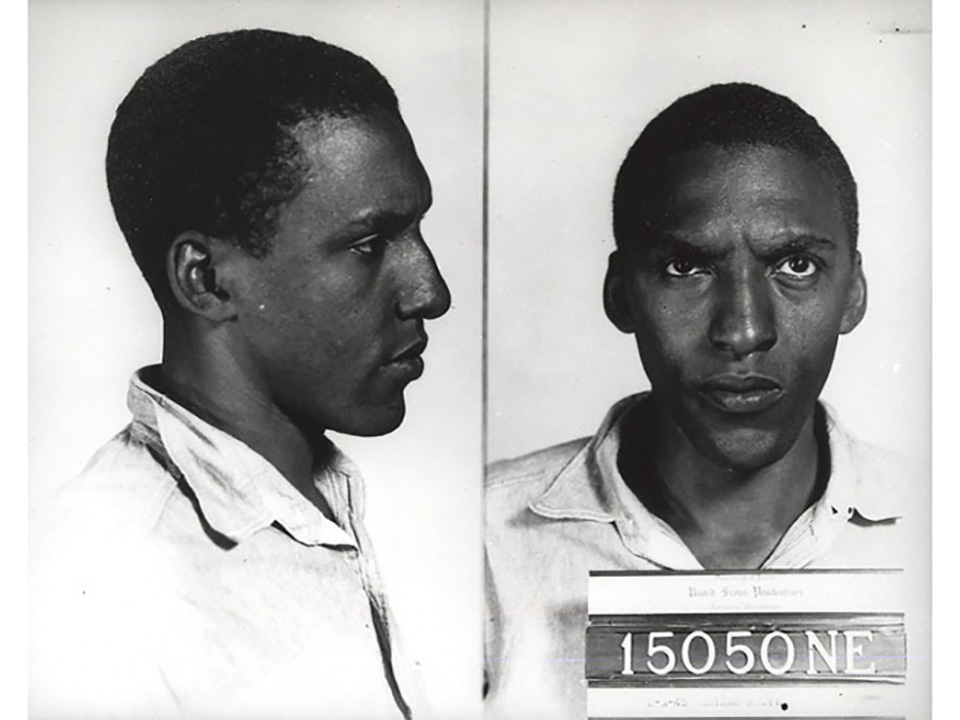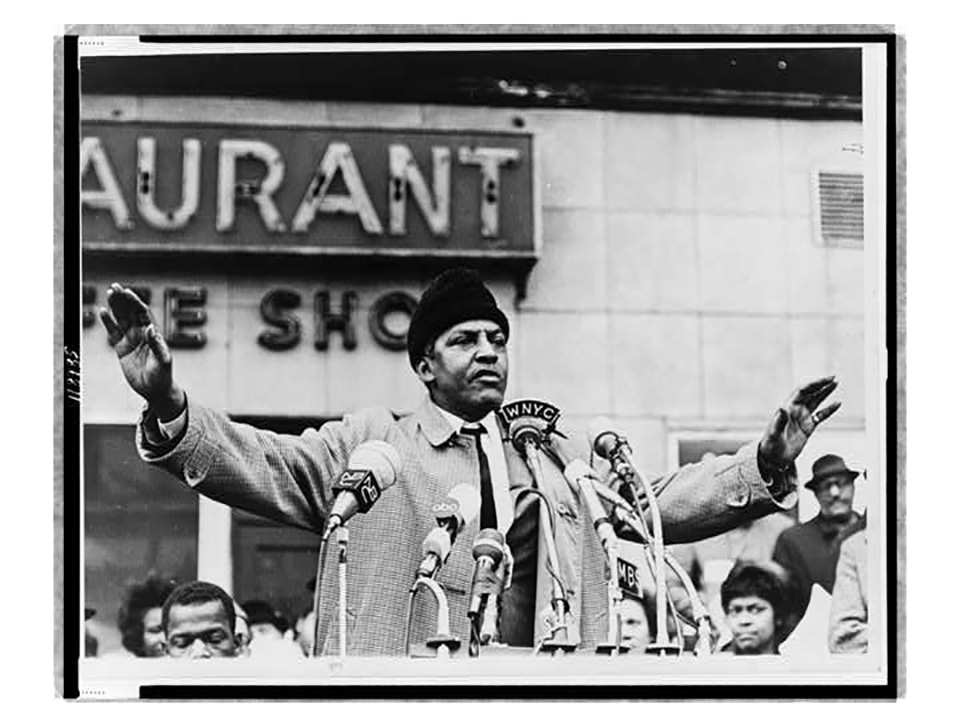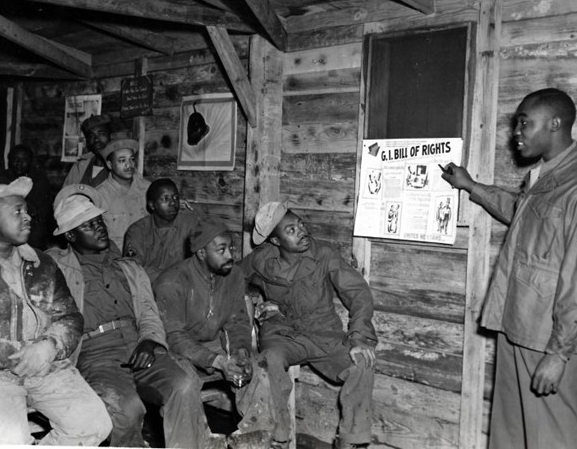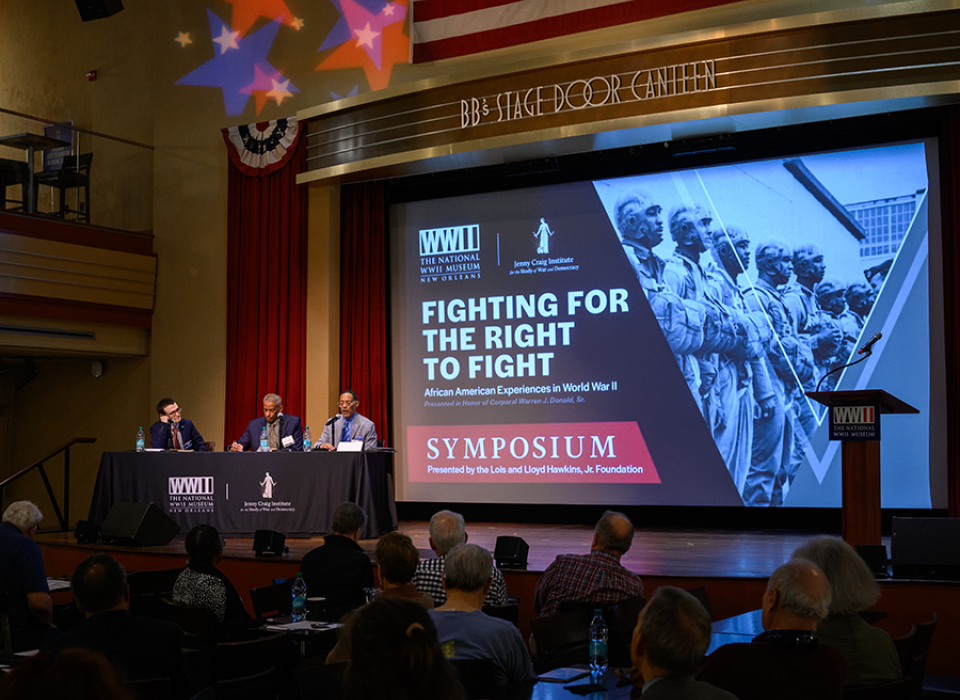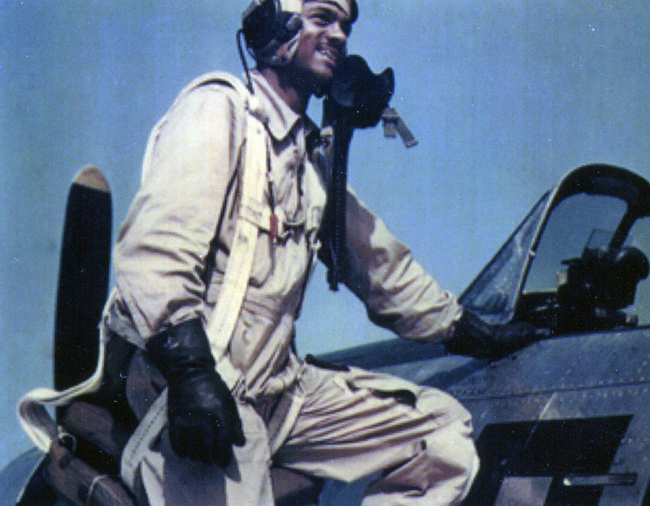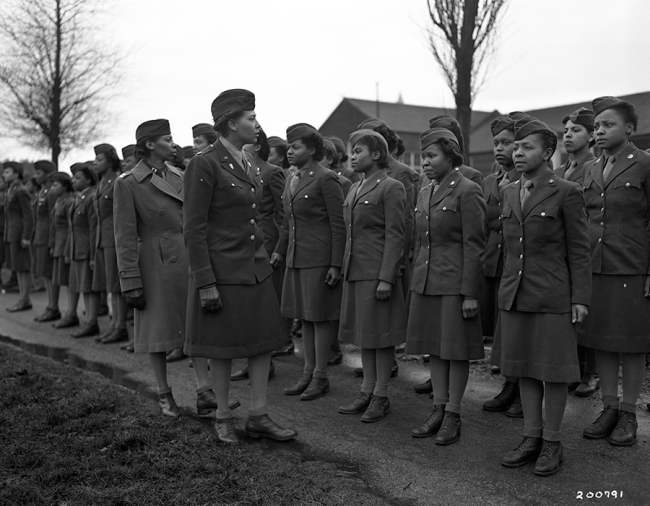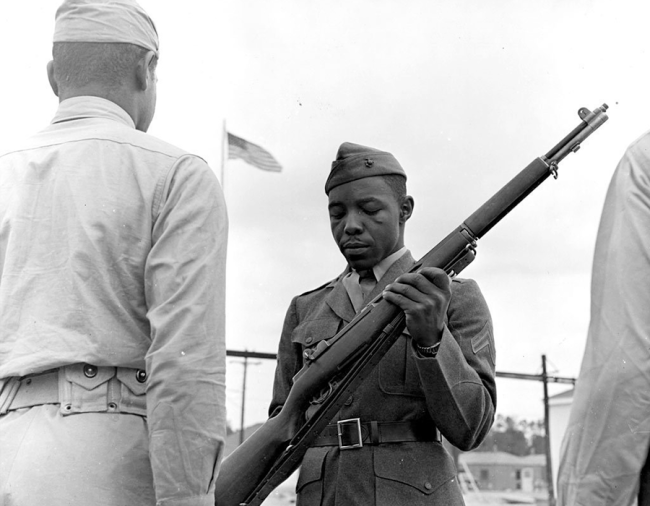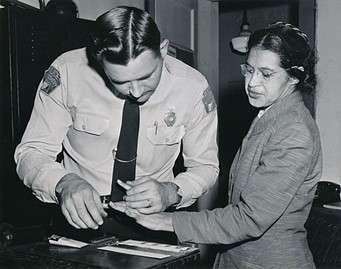Top Image: Bayard Rustin speaking to a group of young people, 1964, courtesy of the Library of Congress Prints and Photographs Division.
Two signature events that are often used to frame the history of the mid-twentieth century civil rights movement are the Montgomery bus boycott of 1955-56 and the 1963 March on Washington. In the former, the arrest of Rosa Parker for refusing to move to the back of a bus launched a year-long community-wide bus boycott that succeeded in ending racial segregation on public transport in the Deep South city of Montgomery, Alabama. The boycott dramatically displayed to the nation the concept of collective non-violence as a tool for social justice. Seven years later, the power of collective non-violence seemed to reach an apex when a racially integrated crowd of 250,000 people from around the nation gathered peacefully in Washington, DC to demand that the federal government enact national legislation to end racial discrimination.
Uniting these events in the popular imagination was the presence and role of Dr. Martin Luther King, Jr. As a young minister in Montgomery in the mid-1950s, the Reverend King drew national attention for his leadership of the bus boycott. And in August 1963, standing on the steps of the Lincoln Memorial on the Washington Mall, he delivered his “I Have a Dream” speech, which has become one of the most iconic orations in US history.
A key figure in the background of the Montgomery boycott, the March on Washington, and the rise of Dr. King to national eminence was Bayard Rustin, an individual who is not often recognized as a significant historical figure. A pacifist and proponent of Gandhian nonviolent direct action, Rustin traveled to Montgomery in the early stages of the boycott, established a trusting relationship with Dr. King, and tutored the young minister in the strategy, tactics, and philosophy of nonviolence. He convinced Dr. King that the boycott could be the foundation of a Southern-wide movement, and he drew up for Dr. King the plans for what became the Southern Christian Leadership Conference. Over the next years, Rustin helped strategize Dr. King’s emergence as a national leader. Rustin was the chief organizer of the 1963 March on Washington. He headed a team that, in just seven weeks, brought a quarter of a million people together to march peacefully for racial justice.
Who was Bayard Rustin, and how and when did he develop the skills of a Gandhian nonviolent activist for racial justice? Surprisingly, the World War II era constituted the critical years in which he explored nonviolent direct action as a philosophy and a method for challenging racial inequality. Traveling across the United States, Rustin created networks of activists and trained them in how to use nonviolence effectively. And, in the immediate aftermath of the war, Rustin’s work helped lead to significant change. In the rest of this article, I will provide some background about Rustin, explain the context in which he did his work, and elaborate on the WWII-era campaigns that moved the cause of racial justice and equality forward.
Bayard Rustin was born in 1912 in West Chester, a small town in eastern Pennsylvania. Despite the community’s long Quaker heritage, West Chester enforced racial segregation in several settings, from its elementary school and public library to the town’s movie theater. Even while still a teenager, Rustin challenged these practices on several occasions. As a young man in the 1930s, during the depth of the Great Depression, he made the decision to migrate to New York City, whose Harlem neighborhood offered more opportunities for a young African American man. In 1930s New York, radical left-wing politics was widespread, and Rustin for a short time explored the political world of the Communist Party. But he also learned about the work that Mahatma Gandhi was doing in India to challenge British imperial control. He quickly became a convert to the Gandhian philosophy of nonviolence both as a way of life and as a vehicle for advancing the cause of justice. At about the same time, Rustin joined a Quaker meeting in Manhattan, and he remained a devoted member for the next five decades.
Rustin’s discovery of Gandhi and his commitment to Quakerism soon led him to the world of pacifist activism and particularly to the Fellowship of Reconciliation, a national organization composed largely of Christian ministers. Founded in part as a reaction to the widespread death and destruction caused by World War I, the Fellowship had primarily preached a message of nonviolence as a way of life. But, at the beginning of the 1940s, when Rustin first encountered it, the Fellowship was led by the Reverend AJ Muste, who was bringing a progressive activist philosophy to the organization. Muste saw pacifism as a route to major social change.
“One must be a revolutionary before one can be a pacifist,” he wrote. “Our only valid objective is the transformation of society, not the building of a shelter for the saints.”
As part of this vision, Muste believed that the Fellowship must take up the cause of racial justice in the United States, and he consciously recruited a racially integrated staff of organizers. One of those whom he hired as a “youth secretary” was Rustin, who began working for the Fellowship out of its national office in New York in September 1941.
At the time Rustin joined the Fellowship as a staff member, war was already raging across Europe and northern Africa and in East Asia and the Pacific. Hitler was engaged in a determined effort to exterminate Europe’s Jewish population. While the United States had maintained a distance from the war when it first broke out in Europe in 1939, the Japanese attack on Pearl Harbor brought an end to that. The United States quickly plunged into the conflict in both Europe and Asia, and for the next four years the nation fully mobilized as never before its resources for war. This was certainly a challenging time to be a pacifist espousing nonviolence as a way of life. But Rustin embraced the challenge and began preaching a philosophy of Gandhian nonviolence as a route to advancing the cause of racial justice in the United States.
In his first year with the Fellowship, Rustin spent his time largely on the road, traveling across the United States to address a wide variety of audiences. He estimated that in 1942, he logged almost 20,000 miles, making stops in two dozen states. He spoke at church conferences for high school youth, on college campuses, and at Sunday school gatherings. African American groups were one of his major audiences, and in his presentations he made a deliberate effort to create an interest in nonviolent direct action as a philosophy and strategy for change. Describing his travels to Muste, Rustin reported on meetings with “local Negro and Jewish leadership, representatives of the AFSC [American Friends Service Committee] and with FOR [Fellowship of Reconciliation] people to discuss the use of nonviolence in facing the almost universal rise of racial tension between Negro and white, Jew and Gentile.”
Not surprisingly, as a black man traveling throughout the United States in 1942, Rustin on several occasions encountered overt racial discrimination, which was part of the routines of daily life. Denied a haircut at a barber shop in Chicago, he organized students at a nearby college campus to boycott the business. When he was refused service at a restaurant in a Midwest college town, he again organized a response. The most dramatic example of discrimination that Rustin faced came on a bus ride he took from Louisville, Kentucky to Nashville, Tennessee. Refusing to stay in the back of the bus, he was arrested and beaten by police. But some white passengers, impressed by his courage, spoke out on his behalf and the local district attorney had him released without charges of violating segregation statutes.
Incidents like these, as well as the efforts to motivate his audiences to take action against racial discrimination locally, left an indelible mark on the people with whom he met and worked. A couple in North Dakota declared that Rustin had made “a profound impression.” From California came word that Rustin was “a huge hit.” Another person characterized him as “very, very charismatic, his personality was just electric.” And from another came the opinion that “there was a magic about Bayard.” Soon, Rustin was being described as the Fellowship’s “one-man nonviolent army.”
Meanwhile, the national mobilization for war had sharpened for many African Americans their anger at the systemic racial injustice that existed throughout the United States. On one hand, they were being drafted into the military and being recruited into jobs in defense industries. On the other, they faced policies of segregation and discrimination both in the military and in civilian life. Describing the heightened racial tensions that he was observing, Rustin wrote that “only a spark is needed to create a terrible explosion.” But he also noted that in the discussions he was having with African American audiences, “no situation in America has created so much interest among Negroes as the Gandhian proposals for India’s freedom.”
The experience of Rustin and other Fellowship staffers led Muste to encourage them to join with other activists to form the 1942 Congress of Racial Equality. CORE, as it was commonly called, prided itself on its commitment to interracial organizing for justice; it would become one of the key organizations of the civil rights movement of the 1960s. CORE organized and led the Freedom Rides of 1961. A highly publicized campaign to challenge segregation in public transportation throughout the South, the Freedom Rides helped launch the decades-long career of John Lewis. But, behind its headline-making history in the early 1960s was its origin and experimentation with nonviolence during World War II.
Rustin immediately plunged into this new opportunity to promote nonviolent racial justice activism. As he traveled across the country, he helped organize several CORE chapters. Students at the University of Colorado formed a group after Rustin spoke there. In San Francisco, he met with black shipyard workers who were angry over job discrimination and won them over to nonviolent techniques of organizing. After speaking at Howard University in Washington, DC and encouraging students to embrace CORE’s philosophy, some began to challenge racial segregation in restaurants, adopting “stool-sitting techniques” that foreshadowed the sit-ins of the 1960s.
All of these responses excited Rustin. But the larger context of a nation at war, and a nation in which race riots were starting to occur in some cities, was also sobering.
“To act with true non-violence in the face of terrific conflict such as race riots demands a great deal of discipline,” he wrote. “Nonviolence will be a difficult message.”
Yet this only made the initial work of CORE and its experimentation with nonviolent direct action all the more necessary. Rustin foresaw a process of “gradually building it up through performance of little actions.”
A major opportunity to extend the message of nonviolent direct action came at the end of 1942 when A. Philip Randolph, the head of the Brotherhood of Sleeping Car Porters, the largest labor union of black workers in the United States, announced that he would convene a national conference to explore nonviolent civil disobedience as a technique in the struggle for racial equality. Early in 1941, Randolph had formed a National March on Washington Movement with the intention of mobilizing masses of African Americans to come to the nation’s capital to protest segregation in the military and job discrimination in federally funded defense industries. The prospect of such an event as the nation moved toward a war requiring national unity disturbed President Roosevelt. While he was not prepared to accede to Randolph’s demand and desegregate the military, he did issue in June 1941 an Executive Order that created a Fair Employment Practices Committee and declared an end to racial discrimination in federal jobs and federally-funded defense production. In response, Randolph canceled the March.
Now, a year and a half later, Randolph was calling on African Americans to embrace nonviolent direct action as a strategy for achieving racial equality. The goal, as one of his assistants described it, was to “harness the flow of rising resentment and indignation on the part of Negro Americans that has become intensified due to the war.” Muste immediately offered Randolph the assistance of Bayard Rustin in organizing the event and in training participants in the techniques of Gandhian nonviolence. Titled “We Are Americans Too,” the convention drew more than 2,000 to Chicago in July 1943. Rustin was given the opportunity to address the attendees and offer instruction as to how nonviolence could be employed to challenge segregation. He described a broad range of situations in which nonviolent tactics might be effectively used, and he offered as examples many of the situations that he had found himself in—the refusal of service by businesses, the separation of black and white patrons in restaurants, and the enforcement of segregation on public transportation. Rustin also explained the ways nonviolent direct action could be deployed to challenge the continuing discrimination that African Americans faced in federal jobs and federal programs.
At the end of the three-day conference, the attendees, in Rustin’s words, made “the historic decision to adopt NVDA [nonviolent direct action] as a major method and strategy.” For Rustin, this meant an intense ratcheting up of his organizing work. Now, through the visibility of Randolph’s movement, he was receiving requests from institutions in the African American community to do training in nonviolent activism and to lead campaigns for change. For example, the Baltimore Afro-American, a major black-owned newspaper, invited Rustin to do a series of trainings in Baltimore, a city that was still largely segregated. In October and November of 1943, he spent a long stretch of time in San Francisco, continuing his work with shipyard workers and building out from their campaigns to the larger African American community. And Randolph asked Muste for more of Rustin’s time to assist him in developing an action program against discrimination in the armed forces.
Rustin’s overlapping work with Randolph, CORE, and the Fellowship was interrupted at the end of 1943 when he received his induction notice from the Selective Service Administration. As a member for several years of a Quaker Meeting, Rustin would easily have qualified for conscientious objector status and then been assigned to one of the many work camps for COs scattered across the United States. But instead, he came to the decision that his conscience did not allow him to cooperate in any way at all with the institutional structure of war, especially in the context of the racial discrimination that was a systemic part of the nation’s armed services. He submitted to the government a pamphlet that he had written, Interracial Primer, as well as an article, The Negro and Non-Violence that had appeared in Fellowship magazine. Rustin was ordered to appear before a federal judge who, in January 1944, sentenced him to a three-year term in federal prison. Early in March, he was transported to the federal prison in Ashland, Kentucky.
Rustin was not alone in making this decision. One out of six inmates in federal prisons during World War II were conscientious objectors who refused to cooperate with the Selective Service Administration. But as I will describe, Rustin was unusual in that he unapologetically carried with him into jail his commitment to racial justice and his adherence to nonviolent direct action as a way of life. Before long, the Federal Bureau of Prisons was classifying him as one of its “Notorious Offenders.” James Bennett, the director of the Bureau, found himself spending a good deal of time responding to the situations that Rustin created.
Immediately upon arriving, Rustin discovered that segregation by race was built into the structure and operations of the prison. Black and white inmates lived in separate cell blocks; they ate separately; they sat apart in showings of movies; recreation did not occur across racial lines. Not surprisingly, Rustin quickly began violating these prison rules. He refused to sit in the “colored” section at a movie showing. He attempted to sit during mealtime with other conscientious objectors who were white. Again and again, Rustin found himself confined to quarantine as punishment. But even then, he refused to be silent. Rustin had a talent for music, and from his quarantined cell he would sing Billie Holliday’s “Strange Fruit,” about the practice of lynching African Americans in the South. Other black inmates cheered him on as they heard his voice. There were about three dozen other conscientious objectors in Ashland, all of them white, and they sought ways to support Rustin’s efforts. Soon, Robert Hagerman, the head of Ashland, was describing Rustin as “an extremely capable agitator,” and he sought advice from Bureau Director James Bennett on how to respond to the upheavals that Rustin was creating in the prison.
But Rustin did not simply resist. He also tried to negotiate, and he offered Hagerman proposals for change. He asked to be allowed to offer a course on US history to an integrated group of black and white inmates. Hagerman granted permission, and soon Rustin was teaching a group composed mostly of whites from the Kentucky and Tennessee hill country. Hagerman also allowed Rustin to create and lead an interracial choir that performed before assemblies of inmates. Soon, he was permitting the free movement of blacks and whites in Rustin’s cell block. And, after Rustin wrote him a letter asking for an end to segregation in the dining hall, sleeping quarters, and prison theater, Hagerman authorized several integrated eating tables. By August, there was also racial integration in the seating at church services in Ashland.
These gains provoked Rustin to move beyond his own individual actions and to try to organize his fellow inmates. Following his leadership, white pacifists began pressing their fellow inmates to support Rustin’s efforts. Hagerman sought ways to contain these protests and, a day before a planned action was to occur, prison officials accused Rustin of sexual misconduct.
Besides his identities as African American, Quaker, and radical pacifist, Bayard Rustin was also a gay man. The 1930s and 1940s were years in which homosexual behavior was criminalized in every state, condemned by every religious community of faith, and categorized as an illness by mental health professionals. Virtually all gay men and lesbians kept their identity secret; it was the only way to avoid encounters with police, loss of employment, and the rupture of family relationships and friendships. While Rustin at this time had not “come out” in the modern sense of the term, he did not pretend not to be gay. He often appeared at social events of his activist comrades with a male companion rather than a female. But this identity remained unnamed and unspoken in his pacifist, activist networks.
But now prison officials were using this fact to disrupt Rustin’s efforts and to discredit him in the eyes of his fellow inmates. In the short run, they succeeded. For several months, Rustin was separated from others and placed in solitary. But by the spring of 1945, he was back among his fellow inmates. In May, when another group of radical conscientious objectors arrived at Ashland, it spurred Rustin to organize a new round of militant actions against racial segregation. When prison authorities denied his demands, Rustin led several others in a hunger strike. To the inmate population, he circulated a manifesto. “We are tired of talking about segregation,” he declared. “We have acted . . . we are not slaves . . . We will not accept a slave’s mind. We are willing to pay a price for our freedom. We will have a degree of freedom no matter what happens – for we will feel we are men for having protested.”
This new round of prison activism against racism led Hagerman to have his staff compile a list of all Rustin’s actions and violations of prison policy. He then used the information to make a successful appeal to have Rustin transferred in July 1945 to the federal penitentiary in Lewisburg, Pennsylvania. Unlike Ashland, Lewisburg was a prison that housed serious criminal offenders. The administrator of Lewisburg had placed all the conscientious objectors in a makeshift dormitory in the prison library, where they spent their days and nights apart from all other inmates. Rustin was kept there as well. It effectively brought an end to his prison activism and he remained at Lewisburg until his release in June 1946.
Though the war was formally over when Rustin returned to his work with the Fellowship and CORE, its impact continued to be felt. The need for the labor of African Americans, their service in the military, and the growing migration out of the South to northern cities had unsettled the racial status quo and provoked an upsurge in calls for change. The NAACP grew explosively during the war. The number of its chapters tripled, and membership rose almost tenfold. Within a year after the war’s end, President Truman established a Commission on Civil Rights to investigate race relations and to make recommendations for change.
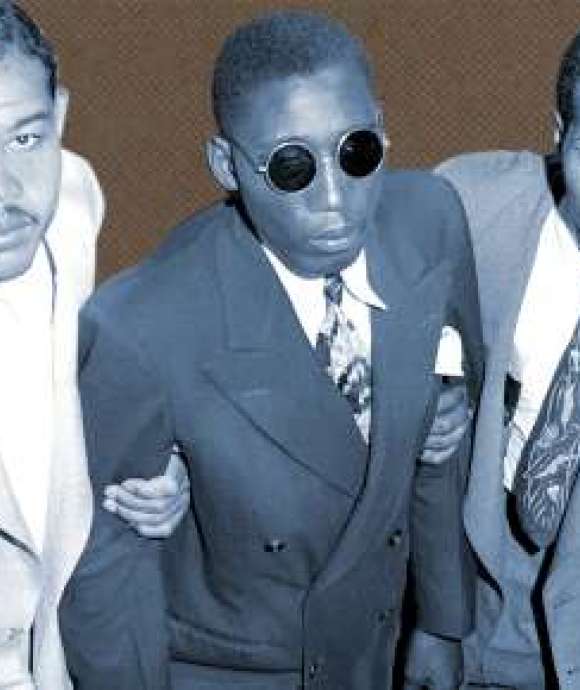
"To the Best of My Ability" Podcast
In Season 2 Episode 7, President Truman finally began to address the racial injustices and violence being committed across the nation, ultimately culminating in the desegregation of the military in 1948.
Immediately returning to his organizing work, Rustin traveled throughout the United States in 1946 and 1947. He organized actions in communities such as Reading, Pennsylvania; Buffalo, NY; Toledo, Ohio; St. Paul, Minnesota, and Chicago, Illinois. He conducted “Race Relations Institutes” that provided information about forms of discrimination, the state of the law, and the theory and practice of nonviolence. Attendees then divided into groups and fanned out throughout the community to employ nonviolent direct action in response to discrimination in businesses and public areas. In Washington, DC in 1947, Rustin conducted a month-long interracial training that brought people together from 11 states, including from the South. In several cases, their actions to desegregate retail businesses succeeded and their work received coverage in more than 30 newspaper articles.
Of greatest consequence, perhaps, was the continued targeting of the armed services. Though the United States was demobilizing, the almost immediate rise of a global Cold War was leading to a significantly larger military than the nation had ever maintained in peacetime. During the war, African Americans had faced quotas restricting their numbers, their roles were severely limited, and they had served in segregated units. As Roy Wilkins of the NAACP described their experience, “They were separated at draft induction centers. They rode Jim Crow trains to training camps. Their barracks were in ‘Negro’ locations when they trained with white troops. They had to buy at the ‘Negro’ PX only.” After the war, Wilkins declared African American servicemembers “are mad enough to do something desperate if they have to go under the same system again.”
In the summer of 1947, after the House Armed Services Committee of the Republican-controlled Congress produced a bill that mandated the racial segregation of trainees, Rustin and Randolph met to discuss how to wage a nonviolent campaign to desegregate the military. Rustin created a committee to end Jim Crow in the military and, with his associates at the Fellowship, developed plans for a massive civil disobedience campaign. Though devoting time and energy to an effort designed, ultimately to strengthen the military, might seem contradictory for a declared pacifist, Rustin saw an integrated military as a vital step on the road to a racially just society. “If the millions of Negroes and white people in the Army are in mixed units,” he wrote, “they will eat, travel, and sleep together. They will have recreation together, work together, and travel on boats about the world together. In the South they will live, sleep, and work together in and beyond army camps. What could be a more revolutionary blow to the caste system? How under these circumstances could Jim Crow survive?”
For the next year, almost all of Rustin’s activist energies were devoted to building a campaign to desegregate the military through the deployment of Gandhian methods of nonviolent direct action. He reached out to African American veterans and members of the armed services to win their cooperation. He had local groups spreading the message from Philadelphia to Los Angeles. In a speech in New York to a crowd of activists in the spring of 1948, he declared that “Segregation in any part of the body politic is an act of slavery and an act of war . . . Civil disobedience is not merely a right but a profound duty . . . It will prick the conscience of America as Gandhi’s campaigns stirred the hearts of men the world over.” With Randolph and others, he picketed the White House as he carried a placard that read “If we must die for our country, let us die as free men – not as Jim Crow slaves.” During the presidential election season that summer, he organized continuing pickets outside Republican and Democratic Party headquarters in Washington, DC as well as outside the party conventions that summer.
The escalating number of protests and the attention the issue was receiving succeeded in pushing President Truman to issue two executive orders at the end of July. “It is hereby declared,” the first one announced, that "there shall be equality of treatment and opportunity for all persons in the armed services without regard to race, color, religion, or national origin. This policy shall be put into effect as rapidly as possible.” The second order established fair employment practices without regard to race throughout the federal civil service.
While Truman’s actions brought an end to the campaign regarding the military, Rustin continued to be an advocate for and practitioner of nonviolent direct action in the fight for racial justice. In the 1950s and 1960s these efforts mobilized people in far greater numbers than ever before. The civil rights movement of those decades was a national headline-making effort that would lead to major national legislation. But, while those decades are the ones that have earned a place in most historical accounts of the struggle for racial justice, Rustin always considered the campaigns of the war decade of the 1940s central to that effort. Reflecting upon that period many years later, he argued that those years of “continuously doing this prepared for the 1960s revolution, prepared for the 1954 Supreme Court decision [of Brown v. the Board of Education] . . . I . . . do not believe that Montgomery would have been possible nor successful except for . . . the long experience people had about reading about sitting in buses and getting arrested, so that people become used to hearing this.”
Meet the Author
A pioneer in the field of LGBTQ history and the history of sexuality, John D’Emilio is a retired Professor of Gender & Women’s Studies and History at the University of Illinois at Chicago. He is the author or editor of almost a dozen books including Sexual Politics, Sexual Communities: The Making of a Homosexual Minority in the United States, 1940-1970; Lost Prophet: The Life and Times of Bayard Rustin; and Intimate Matters: A History of Sexuality in America, co-authored with Estelle B. Freedman and now in its third edition. His biography of Bayard Rustin was a finalist for the National Book Award. He is currently the President of the Gerber/Hart Library and Archives in Chicago, and his newest book, Queer Legacies: Stories from Chicago’s LGBTQ Archives, was published in October 2020 by the University of Chicago Press. All of the material quoted in this article is drawn from Dr. D’Emilio's Lost Prophet: The Life and Times of Bayard Rustin.
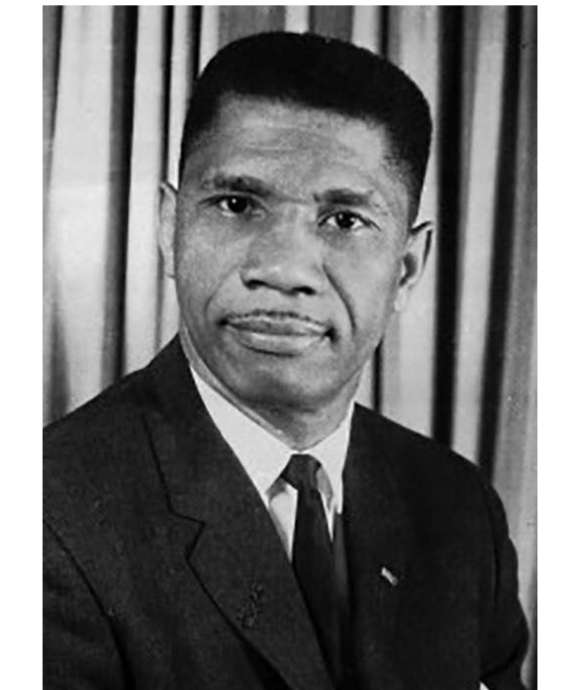
Medgar Evers: US Army Veteran and Civil Rights Leader
Medgar Evers was one of more than a million African Americans who served in the US military during World War II. He returned home only to face daily discrimination and paid the ultimate price for his fight against inequality.
Cite this article:
MLA Citation:
APA Citation:
Chicago Style Citation:
